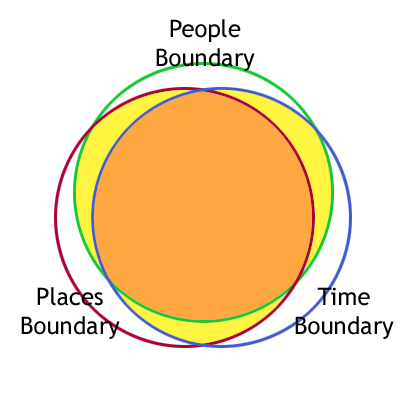I’ll be frank with you; I still smoke. Nevertheless, I think I manage to reduce my smoking habit significantly. Four years ago, I was on three king size boxes a day. Effectively smoking 60 cigarettes daily.
Now, one box lasts for two days, sometimes three. On Fridays, I’d only buy a smaller box containing 14 sticks, and they usually last until the following Monday afternoon.
Here I’ll share with you what I call the Boundary Method which I’ve been using to reduce my smoking habit and hopefully kick it altogether some time soon.
The Three Boundaries That’ll Help You Overcome Smoking
1) The People Boundary
Would you kill your loved ones just for a buzz? Think of that question the next time you have the urge to light up when you’re with your spouse or kids. Because that’s exactly what you’re doing if you smoke near them.
Set a People Boundary to your smoking habit by implementing these steps:
- Don’t smoke when in the company of people you care about
- Include people for whom you want to project a positive image to
- Spend more quality time with people in your People Boundary
Start with immediate family members and close friends who are non-smokers. Include business associates and colleagues as you spend more time with them. Before you realise it, you’ll probably be smoking alone with nobody for company, thus killing the nicotine buzz experience.
2) The Places Boundary
Do you smoke in hospitals or when commuting in public transports? I don’t think that even the most hardcore of chain smokers will do that. Such places are protected by society norms and in most cases local laws from being public smoking areas.
Implement your own Places Boundary and strictly ban yourself from smoking in those areas. Here’s some steps that will help you get started:
- Set strict no smoking zones in your home
- Gradually increase the no smoking zone coverage
- Place your “stash” in inconvenient places
I started by designating my room as the only smoking area in my house. Being the only room in the house with a PC, my family members would use it for the occasional web surfing and checking their emails. Since I’m the only smoker in my family, complaints about the smell of the place rubbed on me.
I then removed the ashtray and kept my cigarettes in the car. This alone reduced my urge to smoke at home significantly due to the inconvenience of getting out of the house, unlocking my car and retrieving the cigarettes.
Now I absolutely don’t smoke at home. First it was due to inconvenience, but now it has become an accepted part of my lifestyle.
3) The Time Boundary
There are certain times of the day, along with specific events that trigger the urge to smoke. I’d be honest with you, I still look for opportunities to go for a quick puff.
The key to overcoming this weakness is by reducing this window of opportunity. Observe the timing as well as events that lead to you to smoke. Find ways to to avoid reaching to that tipping point.
I reduced the time I spend smoking by setting a specific Time Boundary using the following methods:
- Setting up specific no smoking times in my daily schedule
- Narrowing down my “smoking time” gradually
- Set “expiry dates” for purchased cigarettes
I used to take a cigarette break every hour at work. Now, I only go for one pre-lunch and two post-lunch cigarette breaks. This exercise significantly reduces my at-work smoking time by 50%.
Consequently, this reduces my daily cigarette comsumption rate by roughly 30%. This means I’ll be buying cigarettes less frequently because a box takes much longer to finish.
The thing about cigarettes is that they tend to taste funny if an opened box is kept too long. Therefore, rather than waste money by discarding the expired ones away, it’s better to buy them in a smaller pack. You’ll not only be healthier, but you’d save quite a lot of money in the process as well!
Expanding the Boundaries
The good thing about boundaries is that it is a measurable way to track your progress towards reducing, and hopefully eliminate, your smoking habit. Being boundaries, certain sections of each boundary will overlap as illustrated below:

Success in overcoming the smoking habit can be measured by a few factors of your People, Places and Time Boundaries, namely:
- The size of each Boundary
- The size of the Boundaries’ overlapping areas
We should aim to improve on both factors so that our boundaries and overlaps will resemble the following illustration:

Have your own tips and success stories on quitting the smoking habit? Please share them in the comments.
